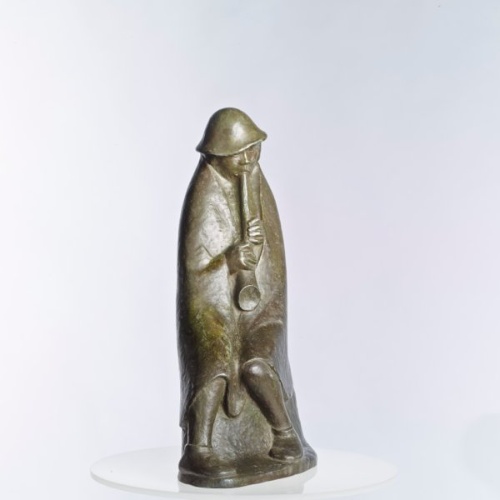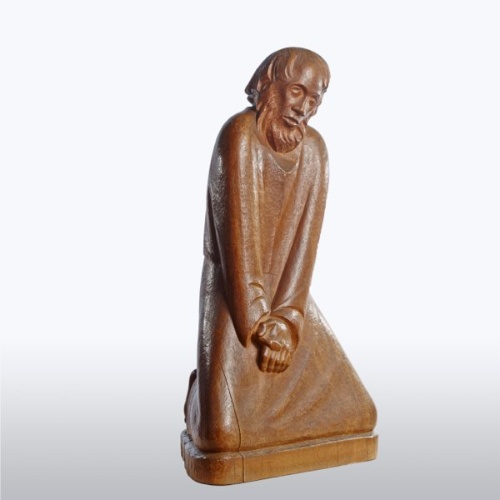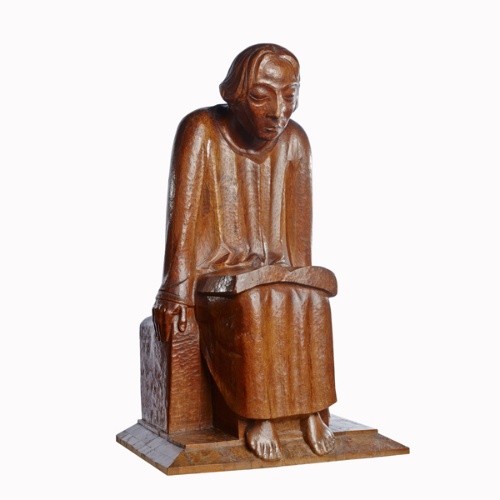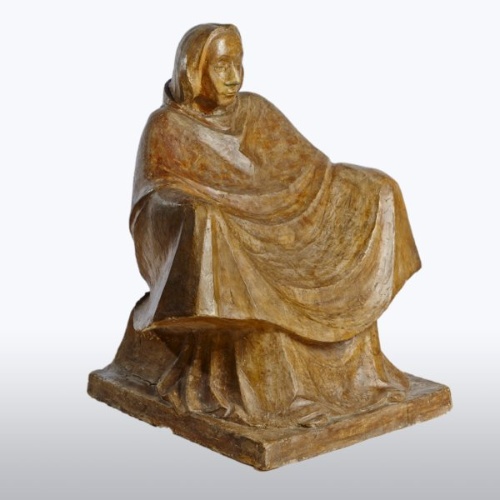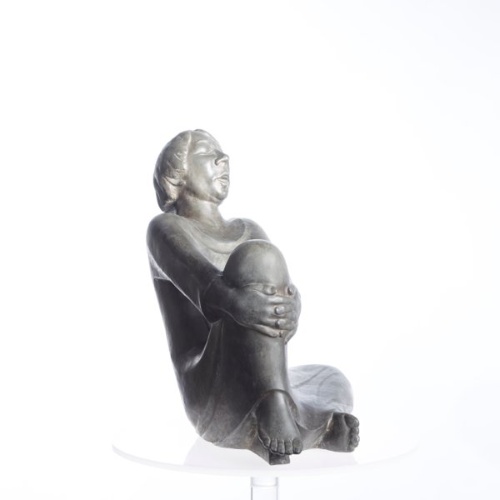Ernst Barlach: Singing Man
- Ernst Barlach (1870-1938)
- Singing Man
- 1928
- zinc
- height: 49.3 cm
Ernst Barlach‘s lifework contains countless motifs, which the artist seized upon in his different creative phases and restyled – such as a reader, beggar, witch or singer. Barlach‘s affinity for music – he loved Bach, Beethoven, Schubert and Mozart, but also The Threepenny Opera by Bert Brecht with music from Kurt Weill – is expressed in many different ways in his artistic and literary works. His Singende Mann (The Singing Man) is one of his most famous sculptures. A young man has his eyes closed and is concentrating on his singing. As was so often the case, the artist has presented a seemingly lapidary situation. In the compression and timelessness Barlach again refers to fundamental human statements, whose expression can be understood independently from culture.
It is not about a specific song or a famous singer: the sense of being engrossed in singing without purpose or aim is reflected in the sculptural work. We could encounter such a man anywhere and at any time. The posture of the Singing Man initially seems somewhat unusual: the motif of the raised right leg with hands clasped around it is borrowed from Oriental art and Buddhist sculpture. Just like Egyptian art and the North-American Indians they regularly provided inspiration for Barlach.
Text: V. P.



























